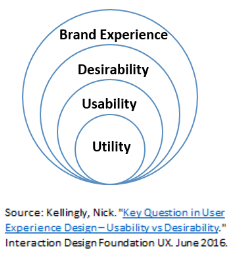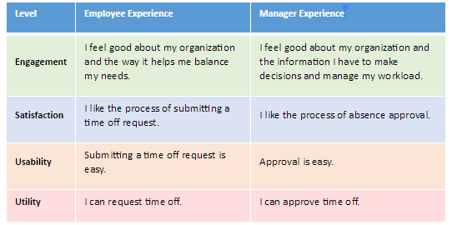

Today’s human capital management technology is a volatile marketplace. No one provider dominates the market. Dozens of established vendors vie for your attention. Hundreds of niche, boutique, and specialty vendors offer solutions tailored to specific needs. Startups elbow in with new ideas, prompting established vendors to innovate.
What that means for you, the buyer, is a wealth of choices. By following a few well-established guidelines, you can arrive at the right solution for your business. You have a lot of decisions to make along the way, and you may need to make compromises. However, with the solutions available today, you do not have to compromise on what is important to your people.
Before you can begin, you will need to evaluate your human capital strategy, which includes alignment with your organization’s purpose, culture, and business strategy.
The way HR does business is evolving. Technology has automated much of the tedious administrative work. HR leaders help business leaders make strategic workforce decisions, design and support the entire employee experience, and manage the systems that support their development. Decision-making is evolving from bench marking, “best practices,” and gut instinct guided by experience to data-driven analysis and prediction.
This new model requires a holistic approach to strategic alignment to build the right workforce and the systems that support its evolution.
The best-performing organizations are aligned to a central purpose, with a strong culture that governs how people do business and interact with partners, customers, suppliers, and each other. And they have a well-defined strategy, aligned to their purpose.
Does that describe your organization? If not, do you want to use this opportunity to change it? If so, consider how your people strategy will support your efforts.
Your human capital strategy aligns with the business in four ways:
The alignment that emerges from your strategic assessment will clarify you needs. It will better enable you to determine what is most important to growing and supporting your workforce.
We recommend you make an exhaustive list of your needs and prioritize them. Work with your line-of-business leaders to develop and prioritize your list of requirements. Find out where you have consensus and start there.
Will you need help? Possibly. An experienced HCM consulting team can be of help. If you decide to seek a partner, we recommend a technology-agnostic provider who is not aligned with any one solution. An objective partner can put you on the right path.

If you are reading this, you probably have made the decision to do something about your workforce challenges. Congratulations.
Now the work begins – building a business case to get new technology approved. A solid business case requires good research and meticulous attention to detail. How you present your case will reflect on how you will execute your plan.
The first step is to review your company’s purpose and strategy.
You must present a proposal that will support your organization’s strategy. The solutions you offer must link directly to business challenges and opportunities.
When you are assessing the strategy, break it down into its components. The information you gather will be useful in planning your project.
In this step, you will map the size, shape, and cost of the workforce needed to execute the business strategy.
Build alliances by talking with key people about their challenges and asking their feedback. Much of the information you need to make your case is in the heads of your people. Seek to understand their challenges and ask them about potential solutions.
These conversations will have consequences. By bringing up their pain points, you will create at least some hope that something will be done about them. You will also sow seeds of dissatisfaction with the status quo. That will lead to a willingness to adopt new solutions.
Review of the current processes and technology to determine if they are meeting your needs. These questions may be helpful in the analysis:
For each of the gaps, investigate whether an improvement in technology will help you overcome the problem. As we discussed in the strategy analysis, technology strategy will influence what type of software deployment you will use. Most companies today use a cloud Software as a Service model, and the percentage of businesses who do is rising.
Most vendors will be happy to talk about your needs and provide pricing guidelines. You can also get good comparisons from independent industry analysts and publishers though they may not include all the indirect and hidden costs you need to consider.
Your presentation will require a cash flow estimates of the current and future states over the life of the technology based on total cost of ownership (TCO). The company’s technology management life cycle policy may govern the time, but you may need to work with your CIO and CFO to decide on the lifespan.
For guidance, see our article on How to calculate total cost of ownership for a Human Capital Management System
Your company will most likely have guidelines on how to develop a written proposal, and may govern how you structure the oral presentation. If not, articles from SHRM and HCI will be helpful.
Your proposed solution will likely be costlier than your current technology, and your TCO will not address the benefits of your initiatives. To show value, you will need to demonstrate the business impact. Industry sources such as Aberdeen Group, Human Capital Institute, and Bersin will be helpful in showing how companies who do better at human capital management are more profitable than those who don’t. You can find case studies that show direct impact.
Include these items in your presentation:
(Source: “The Business Case for Human Capital Analytics.” Human Capital Institute. 2013.)
Today’s technology provides very useful tools that will help you boost employee engagement and productivity. We hope this helps you put together a strong case for improving your organization’s performance.

Anywhere you look in human capital management technology and practices, you will find discussions about the value of the user experience. It seems that buzzwords like “seamless,” “intuitive,” and “engaging” appear everywhere in the lexicon.
HR practitioners understand the need for a satisfying user experience and its impact on user adoption. The industry spends a lot of resources on change management to achieve the level of user adoption of technology that will drive business results.
Too many fall short. While their implementations produce high levels of usability, they don’t deliver an engaging user experience.
The problem may be that they fail to understand that usability is only one component of the user experience. Usability, as defined by ISO 9241-11, is “the extent to which a product can be used by specified users to achieve specified goals with effectiveness, efficiency and satisfaction in a specified context of use.”
The user experience encompasses the entire experience, much of which has little or nothing to do with how software works. We see many examples in the consumer market.
Over the past few years, the online customer experience reshaped user expectations in business software. We can take a cue from online shopping to understand how the experience develops their perceptions.
In the consumer marketing, we go beyond the transaction to shape the entire experience before, during, and after the sale. We create brand and product awareness through multiple communication channels. We support the decision process with more information and learning. We draw buyers into the purchase, then we support the sale with ongoing communication and learning to foster brand loyalty.
We can visualize the result as a hierarchy of satisfaction.
Fostering the customer experience at the engagement level requires more than a satisfactory transaction. It entails customer support, customer education, ongoing communication, and building a sense of community.
To apply this to human capital management, let’s examine it in the context of a request for time off.
The process seems simple. An employee requests time off, and a manager approves it -- but there is much more to the experience, and more than one user has the experience.

Developing an engaging process for time off requests and approval has important usability elements. For the employee, we can display a calendar that shows workdays, summary balances that show PTO available, and recent history. Perhaps a link to scheduled products or other work events would be helpful.
For the manager, include resources to help them manage staffing levels, projects, and other work activities affected by the absence to prevent work disruption.
To create an engaging experience, we present it in the context of communications outside the transaction: work/life balance, a supportive culture, and policies that demonstrate that the company values employees’ time and contribution. Only then can we create an experience that strengthens the personal connection to the organization.
For many transactions that seem mundane, we can create an engaging experience by helping users understand why it is important. For example, creating a job requisition can seem like a routine, tedious task. We can improve the experience by helping each user understand why it is necessary, how it works as a system communication tool, and why it helps hiring managers to select the right person to fill a position.
We can work with software designers and configuration teams to make transactional processes easy and fun, but we can gain a higher level of engagement by thinking outside the transactions.
Pixentia is a full-service technology company dedicated to helping clients solve business problems, improve the capability of their people, and achieve better results.